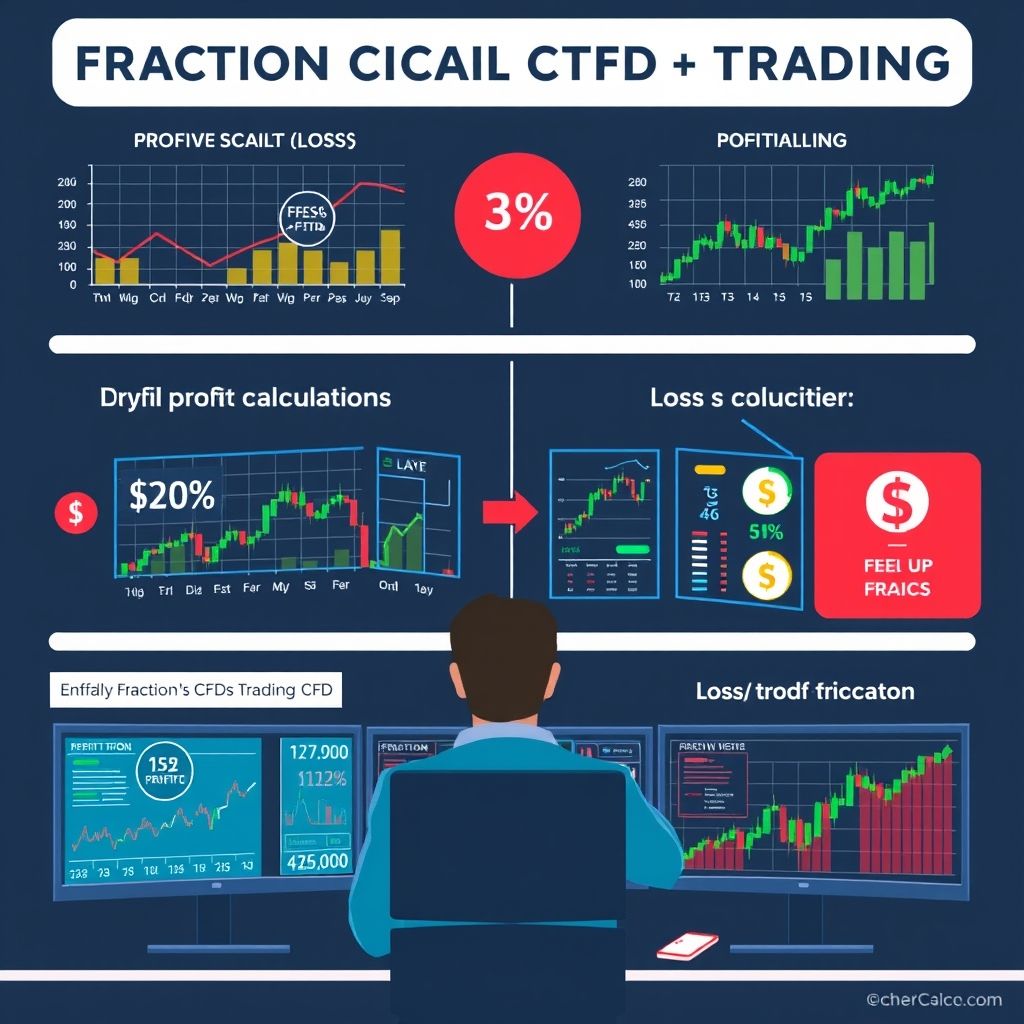How are profits and losses calculated in fractional CFD trading?
How Are Profits and Losses Calculated in Fractional CFD Trading?
Ever dipped your toes into CFD trading and wondered, "How do I really know if I make money or lose it—especially with fractional shares?" Well, understanding how profits and losses work in fractional CFD trading isn’t just about numbers; its about grasping how your investment behaves when even tiny units can move—and move fast. This is where modern trading meets precision, giving you more control, more flexibility, and a sharper edge in a crowded market.

What is Fractional CFD Trading? A Quick Look
CFD, or Contract for Difference, lets you speculate on price movements of assets without owning the actual underlying. Think of it as betting on whether the stock, crypto, or commodities will go up or down, with some clever twists. Now, fractional CFD trading takes this a step further—allowing you to buy less than a full share or unit, which opens doors for smaller investors or those who want more nuanced exposure. Its kind of like ordering a coffee at your favorite café—no need for a full cup if you just want a taste.
How Profits and Losses Are Calculated: The Core Principles
When diving into fractional CFD trading, understanding how your gains and losses are calculated is key. It all revolves around your entry and exit points, the size of your position, and the assets price movement.
-
Position Size and Contract Value: Unlike traditional trading, fractional CFD lets you buy a fraction of the total contract. For example, if a full CFD contract on a stock is 100 shares, and you trade just 0.25 of it, your exposure is smaller. Profit or loss isn’t just about the number of shares but the proportion of the contract you hold.
-
Price Movement: As the asset price fluctuates, the change influences your position proportionally. Imagine buying 0.5 of a crypto asset. If the price moves from $10,000 to $10,500, your profit isnt for a whole Bitcoin but for just that fractional amount—half of the move, scaled down accordingly.
-
Calculation Example: Say you open a fractional CFD position equivalent to 10 shares of a stock worth $50 each. You buy at $50 per share, and the price rises to $55. Your profit, in this case, would be:
(New Price – Entry Price) × Number of Shares × Fractional Size
= ($55 – $50) × 10 × 1 (assuming full contract) = $50 profit.
For a fractional position, adjust accordingly—say, 0.5 of the contract, then your profit becomes $25.
The Power of Leverage and Its Role
Leverage amplifies your trading power—allowing you to control bigger positions with less capital. But it’s a double-edged sword. When calculating profits and losses, leverage magnifies the movement: a 1% change can translate into a bigger percentage of your initial investment. Staying aware of this ensures not just bigger gains, but also real risk exposure.
Advantages: Flexibility and Access in Web3 Finance
Fractional CFD trading delivers some pretty impressive perks. Being able to trade fractions means less capital is at risk, opening opportunities to diversify across multiple assets—be it forex, stocks, crypto, or commodities—without locking in huge sums. Plus, with the rise of decentralized finance (DeFi) and blockchain tech, this form of trading is gradually becoming more transparent and accessible, even allowing for cross-asset strategies that were once limited to institutional players.
Navigating Risks and Smarter Strategies
While fractional CFD trading is giving more people a shot at financial markets, it’s still crucial to approach with a clear plan. Using stop-loss orders, managing leverage carefully, and keeping an eye on market volatility can help prevent getting caught off guard. Think about it like steering a boat—you don’t want to hit hidden rocks just because your vision was obscured.
The Future: Tech-Driven Trading and Decentralized Challenges
Looking ahead, the integration of AI and smart contract-based trading is set to make profit and loss calculations even more precise and automatic. Automated systems can respond to market shifts instantly, piggybacking on decentralized platforms that reduce reliance on traditional exchanges. Yet, resilience remains vital—security concerns, regulatory shifts, and scalability issues are hurdles still being overcome.
Embracing New Frontiers: DeFi, AI, and Smart Contracts
Decentralized finance won’t just be about taking trading off centralized servers; it’s about creating a trustless, transparent ecosystem where profits and losses are tracked through blockchain’s immutable ledgers. AI-driven algorithms are already shaping the way traders respond faster and with better insight, making profit/loss calculations smarter and more reliable.
Empower Your Trading Journey—Profit and Loss Made Clear in Fractional CFD. Whether youre exploring stocks, forex, or cryptocurrencies, understanding how your gains are calculated helps you trade with confidence and control in a rapidly evolving financial landscape. The future’s bright for innovative, tech-enabled trading—stay tuned, stay sharp.

